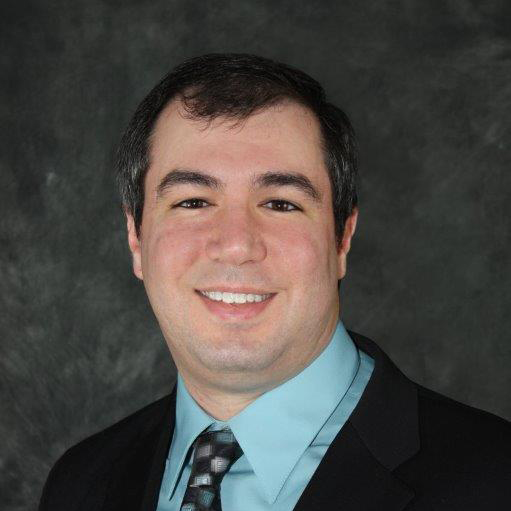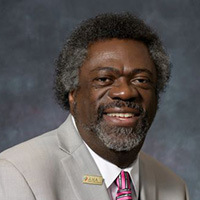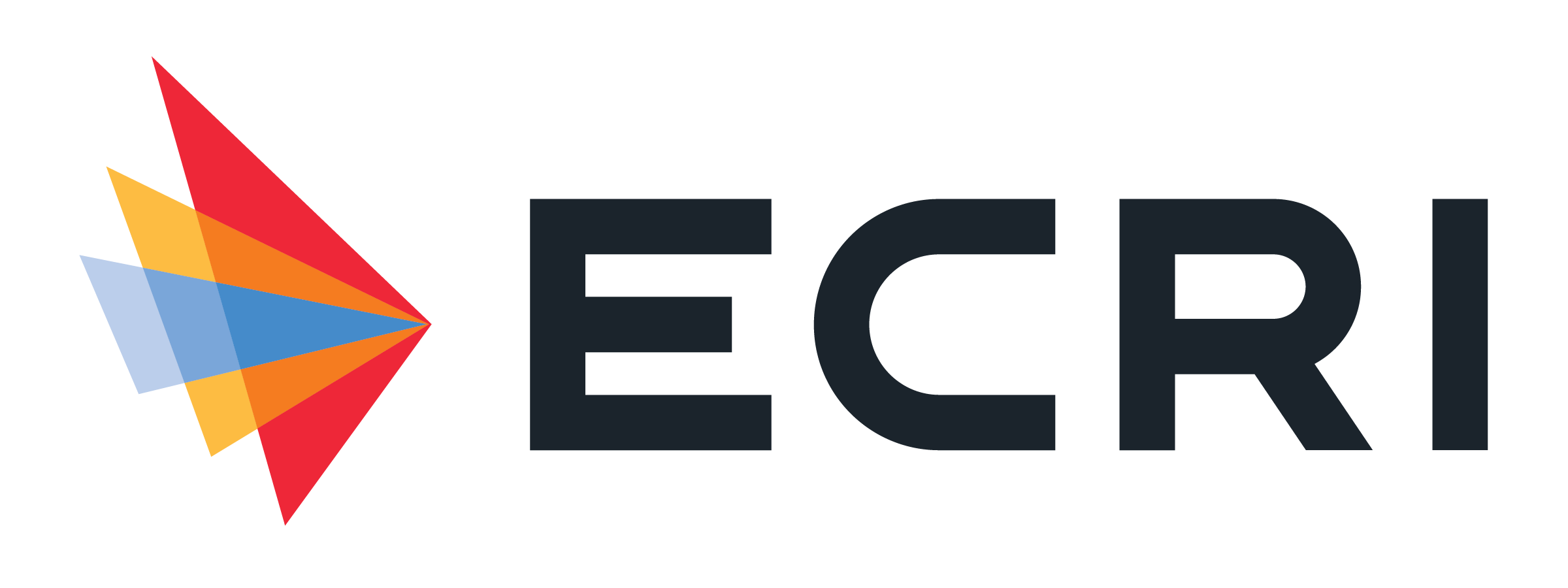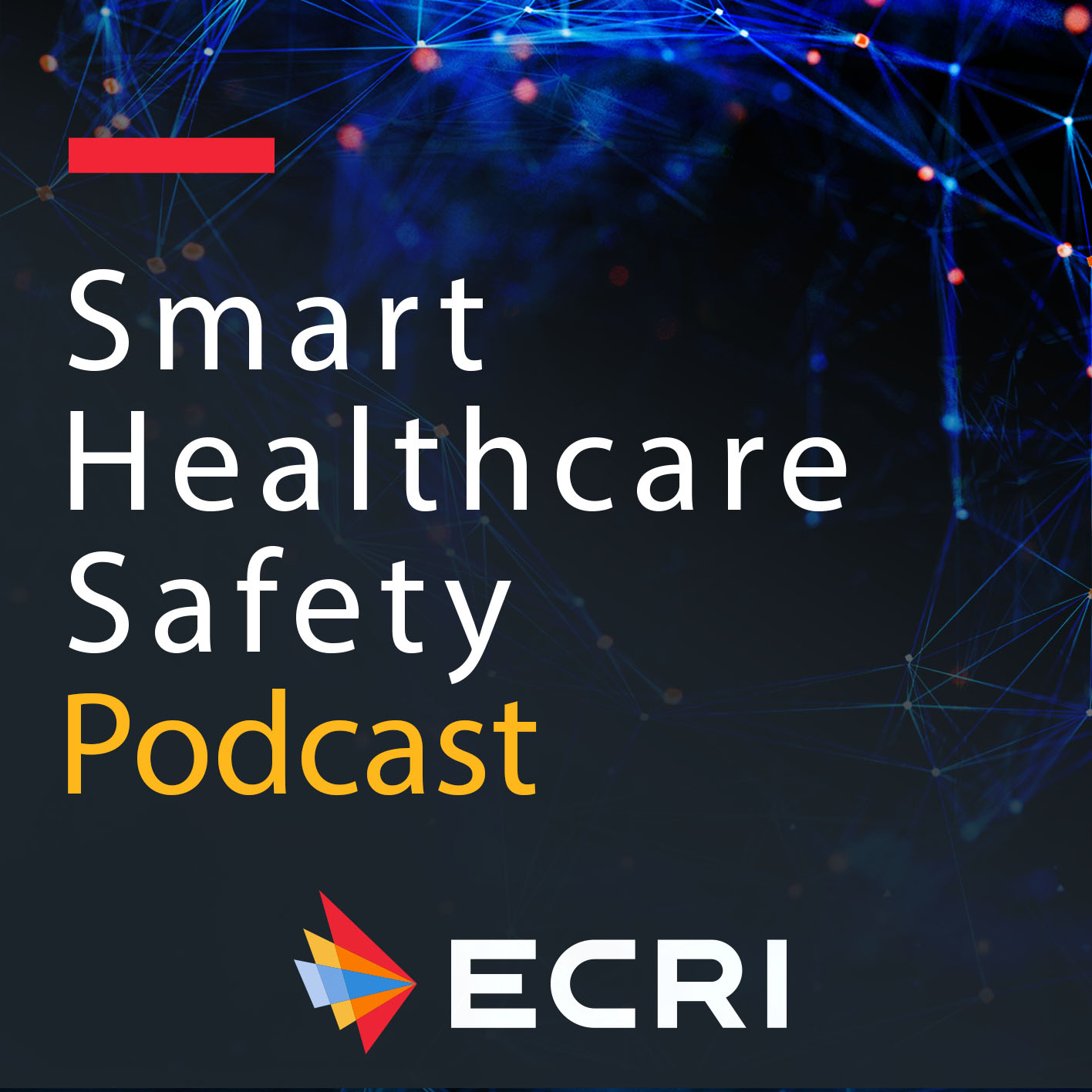Top Patient Safety Concern–Staffing Shortages
- 0.5
- 1
- 1.25
- 1.5
- 1.75
- 2
Paul Anderson: Welcome to Smart Healthcare Safety from ECRI, the most trusted voice in healthcare, committed to advancing effective evidence based care. I'm your host, Paul Anderson, and for more than 10 years, I've overseen our patient safety, risk and quality membership programs here at ECRI. Tens of thousands of healthcare leaders rely on us as an independent, trusted authority to improve the safety, quality, and cost effectiveness of care across all healthcare settings worldwide. You can learn more about our unique capabilities to improve outcomes at www. ecri.org. Today's episode is recorded in conjunction with the release of ECRI's top 10 patient safety concerns for 2022. This year's number one entry focuses on staffing shortages and the dangers they pose to both patients and staff. Our guest is 36th president of The American Nursing Association, which was founded in 1896 and represents the interests of the nation's 4. 3 million registered nurses. The ANA has members in all 50 states as well as US territories, and its work focuses on leading the nursing profession to shape the future of nursing and healthcare. So to get us started, I'll ask our guest to introduce himself.
Dr.. Ernest Grant: Well, thank you very much, Paul. Delighted to be here. I'm Dr. Ernest Grant. I'm proud to say that I'm the 36th president of The American Nurses Association and just delighted to be here with you today.
Paul Anderson: So Dr. Grant, I mentioned that ANA has members in every state throughout US territories. Can you just describe a little bit more what ANA's mission and work are?
Dr.. Ernest Grant: Certainly. Well, as you mentioned, ANA is the premier nursing organization for all registered nurses within the United States, representing the interests of the nation's 4. 3 million registered nurses. We do that in a number of ways, mainly though by setting high standards, practice, accountability, promoting obviously safety for nurses and also for the public. It's one of the things I think a lot of people fail to realize is that ANA strong advocates for the health of the public as well because having a healthy public is our number one objective, so that's pretty much it in the nutshell.
Paul Anderson: So we at ECRI, we named staffing shortages broadly as the year's top patient safety concern. I'm sure this is something that you've thought a lot about at ANA as well. So could you explain a little bit about ANA's sort of thoughts and position on this? You have nurse staffing shortages, particularly.
Dr.. Ernest Grant: Yeah. Well, first of all, let me say that the ANA is very deeply concerned about the staffing shortages. We need a very robust and prepared nursing workforce in order to meet the demands of healthcare today. And one of the things that we're seeing though, unfortunately, is that as the pandemic continues, it's putting more and more stress on nurses and on the healthcare system in general. And for some people, it seems like there's no end in sight. So as a result of that, a lot of nurses are choosing to either take time out. I wouldn't say that they've totally left the profession, I would say that probably they have left the specific job that they may be in, in healthcare, to have that not only the physical break, but also the mental break as well that is needed when you've worked constantly for going on almost three years now. A lot of them report back to me that they're only getting one day off a week, to be able to get at least a 15 or 20 minute break during a 12 hour shift, which isn't really a 12 hour shift. It's now 13 or 14 hour shift. You can imagine the toll that really takes on a person. And as a result of that too, it's the public that loses out because when you've got nurses who are very tired both mentally and physically, we're not able to do the advocating for the patient and the public that we normally would be able to do. So that way, that's what I mean when I say that it's the public that is losing out, is that you have a workforce that is just extremely exhausted, and the things that we normally do, or very keen on doing, we may not be as ready to be able to do that.
Paul Anderson: You mentioned, gosh, I sort of cringe when you mentioned we're coming in our third year of COVID. But I mean, staffing shortage were an issue before that too. Right?
Dr.. Ernest Grant: Yes.
Paul Anderson: This isn't something new with COVID. So what was sort of the pre COVID situation? And how do we know? In a measurable way, do we know how COVID's made it worse? I assume COVID made everything worse, so I assume COVID made it worse.
Dr.. Ernest Grant: Yeah. Actually, COVID just exacerbated something that's been going on for years and years. I've been a nurse now for about 43, 44 years. And every year, there's always been a nursing shortage. Several things have driven that, what has happened. But either not enough nurses graduating from nursing school, or people such as myself, some of the more recent reasons for the shortage, you have people like myself who are the baby boomers, who are reaching retirement age, so to have such a large group of people retire on a yearly basis. And then also, you can say the expansion of healthcare with innovations and technology, healthcare is no longer just completely centered in the acute care setting. It's going out into the communities. It's going out into long- term care and et cetera. So with that too, that has created an increased demand for more nurses. But when you have all the schools of nursing, whether it's a community college, whether it's a diploma program, whether it's a university program, probably totally graduating about maybe 250, 000 nurses a year, that's not enough to match the needs or the individuals who are retiring. So those are some of the things that are contributing to the shortage. But then as we said, COVID just exacerbated that even more because of the increased need for nurses, as nurses themselves got sick, and their colleagues got sick. It's sort of the like the domino effect, so that created an even more increased shortage.
Paul Anderson: Is there an issue? I'm just think that you mentioned we've got about 250, 000 nurses graduating each year. And if that's not even replacement level, but we actually need more than replacement level. We need to be growing the nursing workforce. That seems like a really perilous situation.
Dr.. Ernest Grant: Yes, it does. And that's one of the things that ANA has advocated for with both the current and past administrations, is that more funding needs to be put towards nursing education. Not only, one of the things that we have done or community colleges, and also university settings have tried to do is admit students every semester, whereas before, traditionally you just had one class graduating every year in May. Now we have student who are graduating in both May and December. You have schools that are extending what we call an accelerated program, where instead of going through the whole four year, if you already have a baccalaureate degree, you can go for usually probably about two years and still graduate with a baccalaureate degree. But that still is not meeting the demands, as we talked about. So asking for more funding for not only for faculty because if the average age of the nurse at the bedside is about 55 years of age, you can imagine what the average age of faculty may be. And there just isn't enough room for that. So faculty, more classrooms, and also more clinical sites because obviously, the key to becoming a registered nurse is that you've got to get in a certain amount of hours of clinicals. If you have more than one class per year that you're graduating, say if the average school has about 80 students per graduating class, then that's 160 slots that they need to fill to get at least an average of about 500 clinical hours. So you can imagine that's going to be quite a challenge.
Paul Anderson: Yeah. They've got to have a location that's willing to have them come in and do their clinical work throughout their education.
Dr.. Ernest Grant: Absolutely.
Paul Anderson: Sure. Okay, that makes sense. So you mentioned advocating for increased funding, and then that leads me to there was a call to action that we sent, the ANA sent to secretary of the Department of Health and Human Services, HHS, looking for some immediate action. So what were some of the other sort of top level points that you wanted to drive home in that letter to HHS?
Dr.. Ernest Grant: I'm glad you mentioned that letter because the goal of that letter was to get the secretary to declare the shortage that we're experiencing now a national crisis, whereas before, the shortages prior, we could probably try to work out, do some work arounds, if you will. We could do foreign recruitment of nurses, nurses that come in from the Philippines, from Canada, places like that. But with the pandemic, every country needs their nurse, so you can't rob Peter to pay Paul, even though that's happening. But that's creating a shortage in the other countries as well, which is not fair. So the purpose of that letter was to get the secretary to declare a national crisis, encourage him to bring all the entities together, both government, public, and private, to work on short and long- term solutions for: How can we address this shortage? This is something that we as nurses cannot solve on our own. We've got to have all the players in the game to come to the table and talk about solutions and how they will work. And I think the biggest portion of that call to action is the fact that nurses needing to be at the table where those decisions are made, so that they recognize the value that we as nurses bring to the table, and not just be treated as a commodity, if you will, to move here, there and et cetera, but to actually have our voices heard and feel valued. I think if you ask the average nurse now that is working at the bedside, yes, they want the increased pay, but they also want to feel valued for what they are bringing to the table. And a lot of situations, that's not necessarily happening. So that was pretty much the main reason for that. And we outlined some solutions that we thought should be addressed as well, such as for the advanced practice nurse to remove some of those restrictions that are placed to... Well, not only for the advanced practice nurse, but just nurses in general. There are actually some states that will restrict or limit what the nurse who is at the bedside is capable of doing. They've been educated and trained how to do this, but still there's a restriction that says you can't do this, or do this particular procedure. And it's things like that, that is really creating a, I guess you'd call it a backlog or situations where we could work more efficiently and a lot easier if those restrictions were removed.
Paul Anderson: What are some examples of maybe some other solutions that were in that call to action, if we haven't covered them already?
Dr.. Ernest Grant: Well, part of it was again, putting more funding towards nursing education, obviously, and creating more opportunities for people who want to become a nurse to be able to do that. One of the things that I've done, and that was one of my goals when I first became president of the ANA, was to increase the diversity and also the representation of minorities within the nursing profession. And one of the ways to do that is to start... Well, I would go into second and third grade classes and talk with young boys and girls about the possibility of considering nursing as a profession because by the time they're in junior high or high school, it's too late. Their minds are already made up. But to let them know that as a nurse, you take the STEM courses as that person who wants to be a rocket scientist, or that person who wants to be a pharmacist, or a doctor, or whatever. But the joy about being a nurse is that you are there with that patient from the cradle to the grave. You're able to use your skills to help that person get better. And to me, there's no other joy than doing that. So by opening up those opportunities for diversity, for the BIPOC community, and in places where... Or making it easier for students to repay loans as a possibility, or loan forgiveness. These are some of the things that we have suggested along with other things, such as having a safe work environment. And even nurses who want to go back for, if you have an associate or a diploma, if you want to go back for your baccalaureate, or master's, or doctorate, making it easier for them to be able to do that as well. And incorporate technology and innovations as well, that makes it easier for a person to be able to, who want to become a nurse, to be able to do that as well.
Paul Anderson: So that leads me to I think one of the other really important questions here is, there's a role for the government. Right? What is the role of an individual health system, a provider organization? So you touched on one, provide a safe work environment. Government can't make that happen, but if I'm running a hospital, I can work towards that. What are some other things that a provider organization can do?
Dr.. Ernest Grant: Well, let's talk, if you don't mind, I'd like to expand a little bit more on the safe work environment thing because one of the things we're hearing now from nurses as well is that they're being both physically and verbally abused by patients, patients' families, even their coworkers. And we know that it's part of it is the environment in which we're in. Everyone is tired of this virus. So we're on edge very much quicker than perhaps we would be under pre COVID circumstances. But one of the things that a nurse needs to know is that their employer has their back. So when they do report such situations, they need to know that there's a system in place that they can go to, to report it, first of all. And number two, that the employer's going to quickly address that particular situation, so that they feel supported. Nothing's worse than going into work and feel like you're going to the front of a battle field, but your colleagues don't have your back, so that's not a good situation. Also, stopping bullying in the workplace environment is another extreme situation. And of course, the utmost is we need to increase nursing salaries so that again, they feel valued, not only for the service that they bring, but they're rewarded for that by having an increased pay. But also, valued in the way that the employer maybe walks around, and just have a chat with them, do an environmental scan. What's going on with you today? How are you doing? Or being able to pick up on that nurse who may be having maybe some physical or mental issues. And we need to be able to address that before it reaches a breaking point to where that person may either, God forbid, but we have cases where healthcare providers have committed suicide. And as people look back on that and they look for those little subtle clues and says, " Yeah, that was a cry for help that I failed to pick up on." So if we can begin to identify those particular situations, those are some of the ways too that we can help in those environments.
Paul Anderson: We've touched on a lot of things that can happen at a lot of levels. And I always like to wrap up by asking: What's the starting point? Particularly if I'm running an organization, I mean, you talked about creating a safe workplace, just being visible as a leader in the organization. Right? We can't solve all this before the weekend starts. We're recording on a Friday, so I'm not going to have this fixed by tomorrow morning. But if I'm a leader in an organization, what is the starting point that I can do right after lunch today?
Dr.. Ernest Grant: If I was the leader, one of the things... I still think being able to do those walking rounds, checking on the environment. What are you hearing? And responding to what you're hearing. It's nothing worse than to hear reports from those that your direct reports, that this is going on and that's going on, and to turn a deaf ear, but to address it because obviously, usually that's the sign of a larger problem, or at least a growing problem that if you don't address it now, it's going to really come back to be a much larger problem. So I think doing those environment walking rounds, or having those town halls, encouraging your nurses to be able to speak up and know that not only are we hearing your concerns, but also addressing your concerns. And that's one thing you really get the admiration and the confidence of the individual when they can see the results of, if I said this is a problem and you've addressed it, then I know you've got my back, rather than just thinking of the individual as a warm body to provide care for 12 hours or 14 hours and that's it. You really need to show the individual how much you value what they bring to the table.
Paul Anderson: Creating that virtuous cycle. Right?
Dr.. Ernest Grant: Yes.
Paul Anderson: You tell me something, I do something about it. Now you're going to tell me more because you see I'm going to do something about it, and just keep building that up.
Dr.. Ernest Grant: Absolutely. And encourage them to be able to be part of the solution as well because sometimes as administrators, we don't have all the answers. But it certainly doesn't hurt to flip the script if you will and say, " Well, what would you do in this particular situation? How would you handle that?" Because again, those who are closest to the problem, sometimes they can see more clearly what the problem may be, or a solution that perhaps we haven't thought about in the C suite.
Paul Anderson: Is there anything I haven't asked you that I should have?
Dr.. Ernest Grant: No, not that I can think of. I really have enjoyed this, and I hope those who are listening, that there's some really great takeaways that they may be able to use to make their work environment that much better, that much safer.
Paul Anderson: Dr. Grant, thanks so much. We really appreciate your time.
Dr.. Ernest Grant: Thank you.
Paul Anderson: Learn more about ECRI and the top 10 patient safety concerns for 2022 at the ECRI website at www. ecri.org. The report features staffing shortages as its top issue. You can find out more about the American Nurses Association at www. ana. org. Be sure to subscribe to Smart Healthcare Safety on Spotify, iTunes, Google Play, and wherever you get your podcasts, to get our latest episodes. We welcome your feedback. Visit us at ecri.org or email us at ecri- podcasts @ ecri. org.
DESCRIPTION
Each year, ECRI releases its Top 10 Patient Safety Concerns list identifying potential sources of danger for patients and staff. We believe these risks require the greatest focus for the coming year.
In this episode, we're talking about ECRI’s number one Top 10 concern for 2022: staffing shortages and the potential dangers to both the patients and the staff. Prior to 2021, there was a growing shortage of both clinical and non-clinical staff, but the problem has grown exponentially.
Our guest is Ernest Grant, PhD, RN, FAAN, the 36th President of the American Nurses Association (ANA). The ANA represents the interests of the nation's 4.3 million registered nurses, and its work is focused on leading the nursing profession to shape the future of nursing and health care.
Learn more about ECRI’s Top 10 Patient Safety Concerns 2022 and download the report today.
Today's Host

Paul Anderson
Today's Guests


